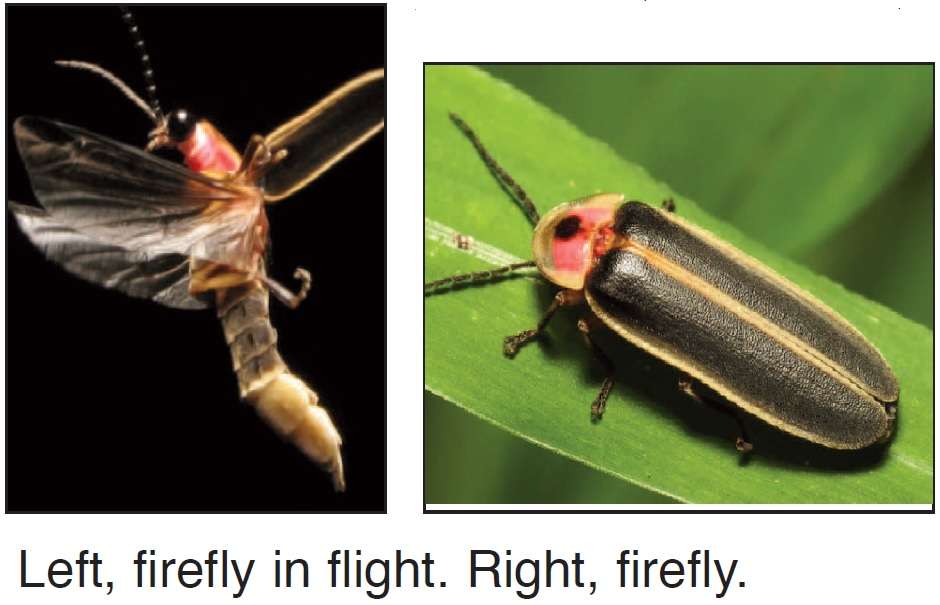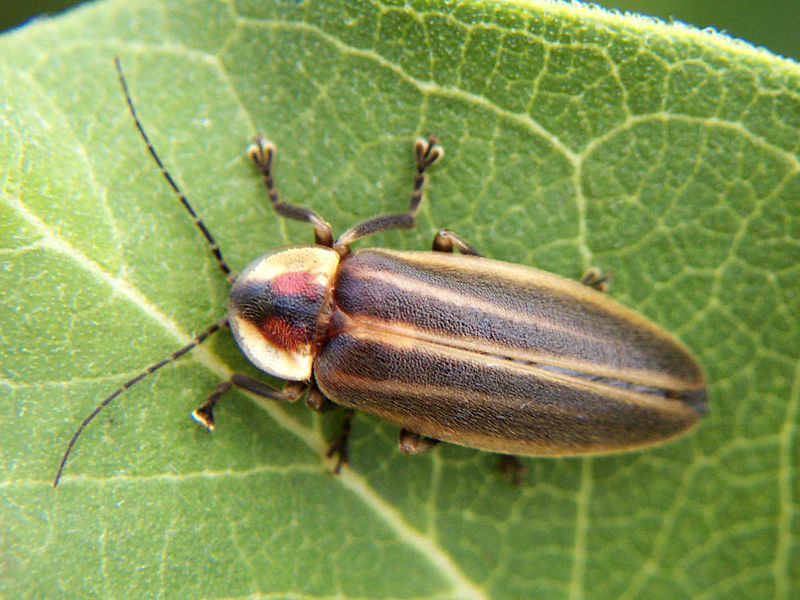SCORES & OUTDOORS: The re-emergence of the almost forgotten firefly
 by Roland D. Hallee
by Roland D. Hallee
A reader recently told me they saw some fireflies recently, and asked whether it is early for them.
I guess it all depends on a number of factors.
Most people associate fireflies with soft summer evenings, but late in February and into March it is possible to see winter dark fireflies glowing in the woods. The larvae and pupae have the ability to bioluminescence, but lose the necessary organs as they become adults during their two-year lifespan.
But the adults emerge out in the warmer late spring, early summer, when it’s warm and humid. And that’s when we usually see the flashing with the adults, the nocturnal species; we’re probably more aware of those. It’s usually June and July when they’re mating and very active as adults.
Larvae are predators and can be found in decaying logs, especially pine; they tend to live in colonies because the habitat is good. So keep a look out and you may see the glow high up on trees or lower down on fallen snags.
Fireflies are attracted to high grasses and shrubbery, and they rest on tall blades of grass during the day. Mowing too often can actually reduce the number of fireflies in your yard in general.
While some fireflies produce larvae that glows, called a glow worm, the fireflies in Maine do not. Technically, Maine fireflies are called a Big Dipper Fireflies. Fireflies use their blinking lights to attract a mate, but they also communicate other messages, like claiming a territory.
Do adult fireflies eat mosquitoes or other insects? Well, the eating habits of fireflies generally differ from those of the predatory larvae. Most of the adult fireflies feed on dew droplets, pollen, or nectar from flowers, but there are some exceptions. Some of the species are known to eat smaller insects
 As a child, when we visited family in Canada, we used to go to a camp on the lake. Coming from a generation that believed “children should be seen, and not heard,” we were relegated to “go find something to do,” when the adults got together. We would go catch fireflies. Catch fireflies carefully, treat them gently and release them into the wild again when you’re done, and you’ll be able to enjoy these fascinating creatures without causing any harm.
As a child, when we visited family in Canada, we used to go to a camp on the lake. Coming from a generation that believed “children should be seen, and not heard,” we were relegated to “go find something to do,” when the adults got together. We would go catch fireflies. Catch fireflies carefully, treat them gently and release them into the wild again when you’re done, and you’ll be able to enjoy these fascinating creatures without causing any harm.
These fireflies are a family of insects in the beetle order, with more than 2,000 described species, many of which are light-emitting. They are soft-bodied beetles commonly called fireflies, glowworms, or lightning bugs for their conspicuous production of light, mainly during twilight, to attract mates. Light production originated as an honest warning signal that the larvae were distasteful; this was co-opted in evolution as a mating signal in the adults. In a further development, female fireflies mimic the flash pattern of other species to trap their males as prey.
Fireflies are found in temperate and tropical climates. Many live in marshes or in wet, wooded areas where their larvae have abundant sources of food. While all known fireflies glow as larvae, only some adults produce light, and the location of the light organ varies among species and between sexes of the same species. Fireflies have attracted human attention since classical antiquity; their presence has been taken to signify a wide variety of conditions in different cultures, and is especially appreciated aesthetically in Japan, where parks are set aside for this specific purpose.
Most fireflies are distasteful to vertebrate predators, as they contain a steroid similar to the those found in some poisonous toads.
In the United States, one of the most famous sightings of fireflies blinking in unison occurs annually near Elkmont, Tennessee, in the Great Smoky Mountains, during the first weeks of June. Tourists from all over the U.S. make the annual pilgrimage there to witness this marvelous natural display.
With all this, what are their interactions with humans?
While fireflies do contain toxins, they are harmless to humans unless eaten in massive quantities. Whether you know them as Lightning Bugs or Fireflies, these are beneficial insects. They don’t bite, they have no pincers, they don’t attack, they don’t carry disease, they are not poisonous, they don’t even fly very fast.
Throughout history, fireflies have put on some spectacular shows for humans to watch. Unfortunately, their numbers are in decline. So, if you should be privileged enough to witness a nighttime performance, enjoy!
Roland’s trivia question of the week:
Who was the last Boston Red Sox pitcher to hurl a no-hitter?
Responsible journalism is hard work!
It is also expensive!
If you enjoy reading The Town Line and the good news we bring you each week, would you consider a donation to help us continue the work we’re doing?
The Town Line is a 501(c)(3) nonprofit private foundation, and all donations are tax deductible under the Internal Revenue Service code.
To help, please visit our online donation page or mail a check payable to The Town Line, PO Box 89, South China, ME 04358. Your contribution is appreciated!



Leave a Reply
Want to join the discussion?Feel free to contribute!